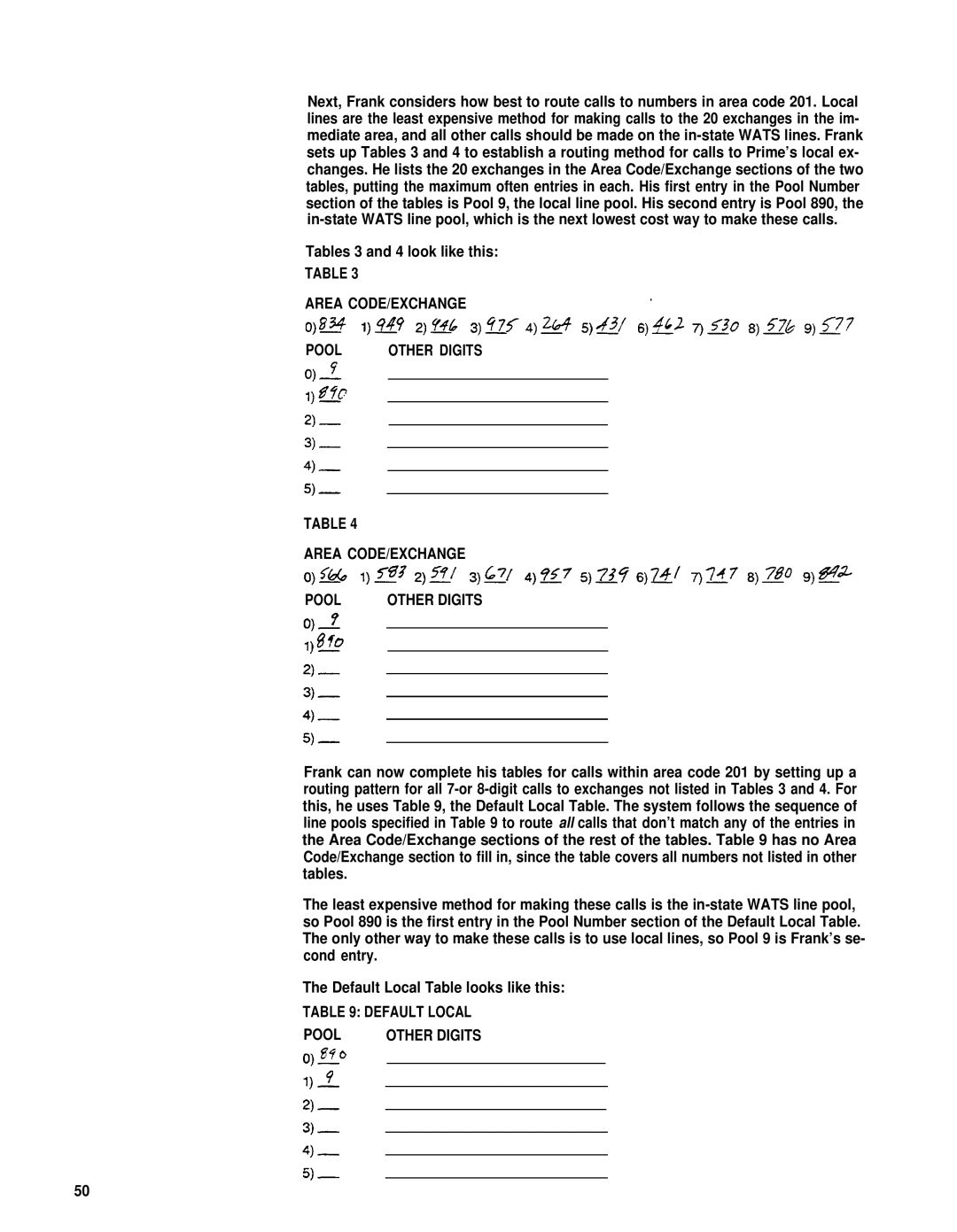
Next, Frank considers how best to route calls to numbers in area code 201. Local lines are the least expensive method for making calls to the 20 exchanges in the im- mediate area, and all other calls should be made on the in-state WATS lines. Frank sets up Tables 3 and 4 to establish a routing method for calls to Prime’s local ex- changes. He lists the 20 exchanges in the Area Code/Exchange sections of the two tables, putting the maximum often entries in each. His first entry in the Pool Number section of the tables is Pool 9, the local line pool. His second entry is Pool 890, the in-state WATS line pool, which is the next lowest cost way to make these calls.
Tables 3 and 4 look like this:
TABLE 3
AREA CODE/EXCHANGE | . |
|
POOL | OTHER DIGITS | |
| | | |
| | | |
| | | |
| | | |
| | | |
| | | |
TABLE 4
AREA CODE/EXCHANGE
Frank can now complete his tables for calls within area code 201 by setting up a routing pattern for all 7-or 8-digit calls to exchanges not listed in Tables 3 and 4. For this, he uses Table 9, the Default Local Table. The system follows the sequence of line pools specified in Table 9 to route all calls that don’t match any of the entries in the Area Code/Exchange sections of the rest of the tables. Table 9 has no Area Code/Exchange section to fill in, since the table covers all numbers not listed in other tables.
The least expensive method for making these calls is the in-state WATS line pool, so Pool 890 is the first entry in the Pool Number section of the Default Local Table. The only other way to make these calls is to use local lines, so Pool 9 is Frank’s se- cond entry.
The Default Local Table looks like this:
TABLE 9: DEFAULT LOCAL

